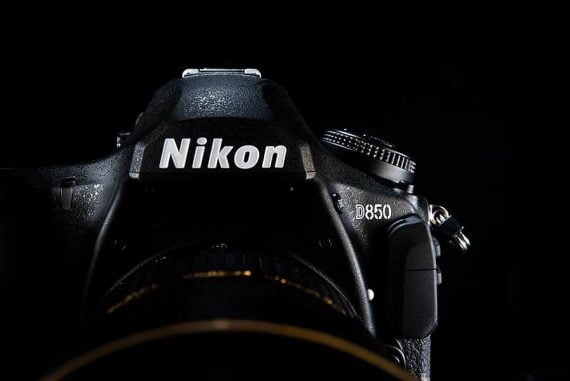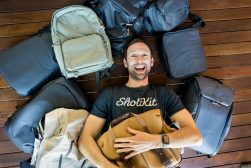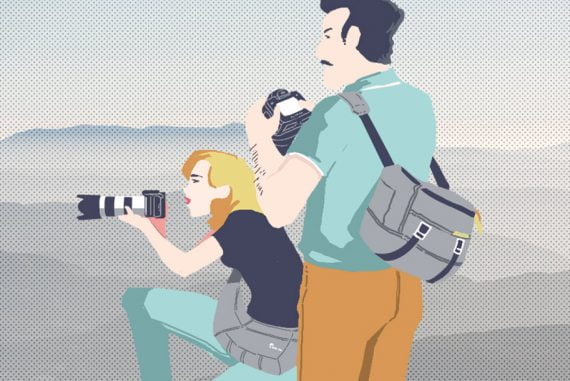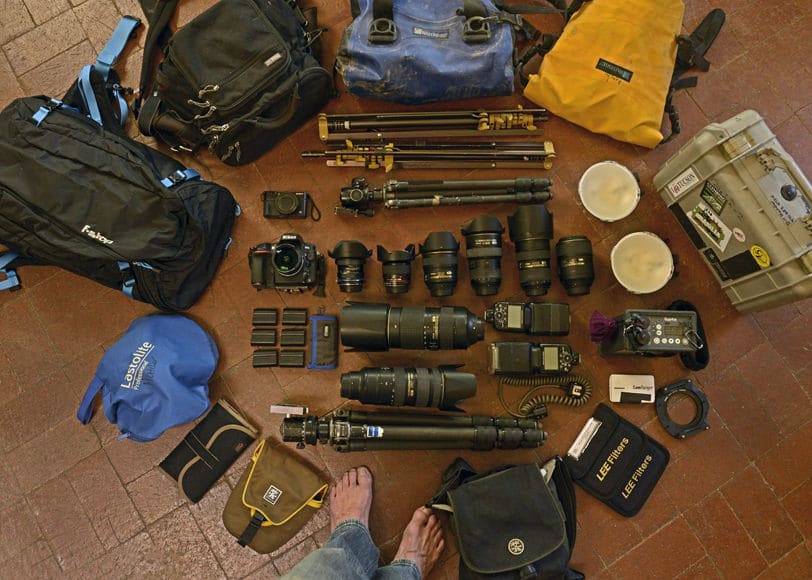

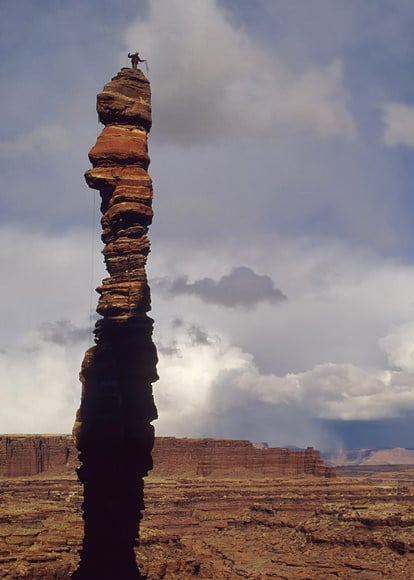

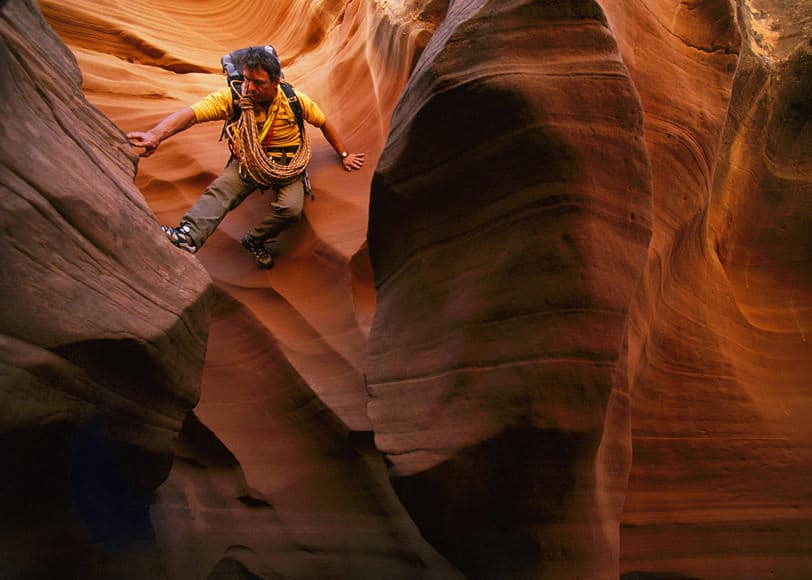
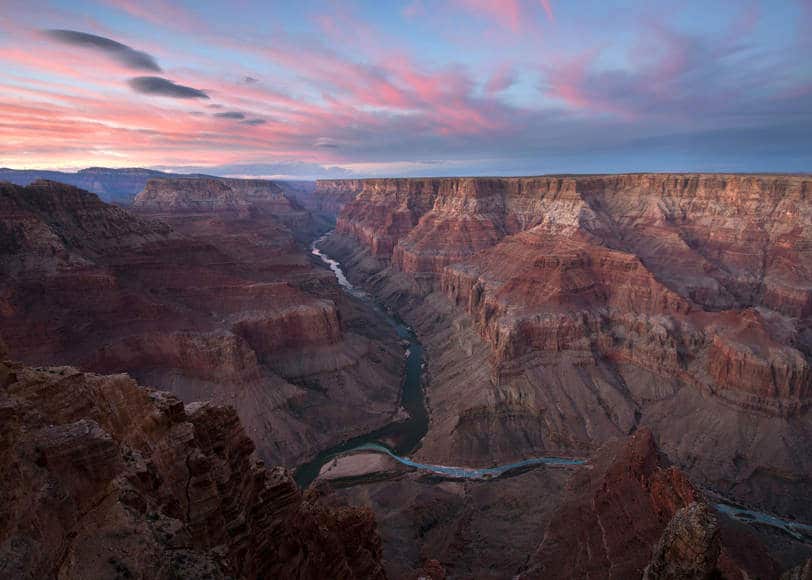



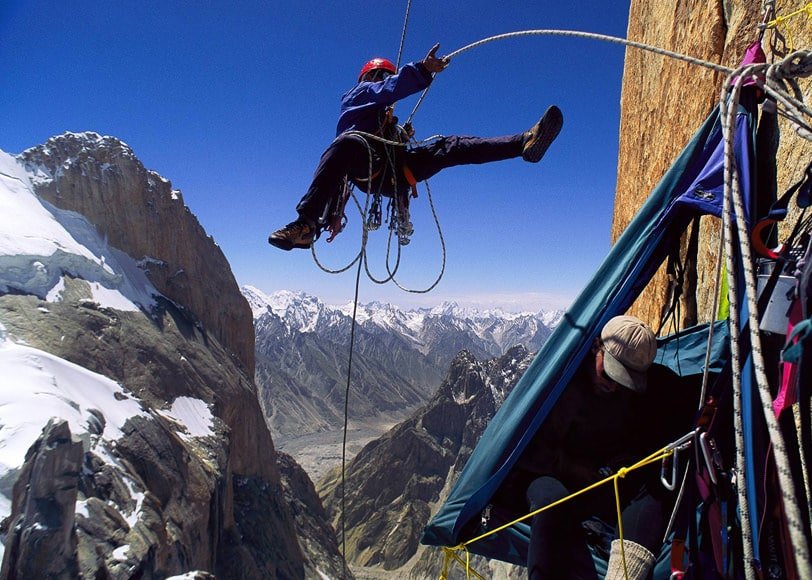
Bill Hatcher
Travel | Last Updated: April 4, 2024
Hi! I am an adventure and expedition photographer. The quick answer to why I decided to pursue photography is easy; I am the third of four generations of pro photographers in my family. I was brought up hearing the stories of my Grandfather traveling the world to shoot stories, talking cameras and photo gear with my cousins and uncles. My family is in the newspaper and journalism business, but I decided to go a different route and focus on shooting magazine stories about adventure, expeditions and science around the world.
Let’s talk about gear. My grandfather taught me that cameras are tools. His cameras over the years were a diverse collection depending on the shoot and intended use. He used Leicas, Canons, Hasselblads and in the early days the Graflex 4×5 Speed Graphic press camera.
I have been shooting professionally for 30 years, and while I have tried many systems, today I use Nikon SLR cameras and lenses. The gear selection seen here is the equipment I traveled with recently for an assignment documenting reforestation in Mexico. This kit is my basic photo documentary gear, and while I might only carry one body, a flash and a couple of lenses with me during the day, I keep the rest of the back-up gear and special lenses and lighting gear nearby.
Camera: My main camera now is the Nikon D850. My backup is the Nikon D810
. The resolution and dynamic range of the Nikon D850
is legend. I also carry a pocket camera, the Sony RX-100 IV
. I usually have at least 6 spare batteries and a couple of Nikon AC chargers and a DC USB car charger. I use the Sony 64GB XQG
cards and the UHS-II SDXC Memory Card
. The remote trigger for my camera is a CamRanger wireless trigger coupled with a Mac iPad mini
. I use the CamRanger for photo stacking and remote triggering of my camera.
Lenses: I love super-wide-angle lenses because working on a cliff face tied into climbing ropes there is not much room to move around or to step back from my subject. Also, the locations I shoot are often in stunning locations and super-wide lenses, the favored lenses of landscape photographers, are a perfect fit.
On my SLR is a 16mm f/2.8 fisheye lens. If you look closely this fisheye is an ancient manual-focusing lens. It was probably manufactured in the early 1980’s. I bought this lens used 25 years ago. At f/8 this lens will render into focus everything from 4 feet to infinity, so AF is unnecessary. I could replace this with a newer AF lens, but I keep this lens around because it still works and it’s fun shooting with such ancient glass.
Other wide angles I use include the crazy Laowa Venus Optics lenses like the 12mm f/2.8 and the 15mm f/4 Macro shift lens
. The macro lens can focus 1:1 and has a close focus distance of 4.7 mm! My main lens for shooting rock climbing is the Nikon 16-35mm f/4
. I also have owned the Nikon 14-24mm f/2.8
, but never liked its weight – it never seemed balanced on my camera.
I have a couple of specialty lenses; for star shots and light painting I use the Nikon 24mm f/1.4, for low light and night shooting, I also have the Nikon 105mm f/2.8 ED micro lens and 600mm f/4 micro
. The lens that always seems to be on my camera is the Nikon 24-70mm f/2.8
. This one lens covers the majority of my shooting needs.
I own two telephoto lenses, and both are zooms. The 70-200mm f/2.8 GII AF-S ED and the 80-400mm f/4.5-5.6 G ED
. I find I tend to grab for the 80-400 because I like the added reach this lens gives. Taking advantage of the 45mp resolution of the Nikon D850
I can crop images if the 80-400
is not enough telephoto. I do own the TC-14EIII 1.4x tele converter
, but rarely have a need for it.
Lights: For portable lights I carry two Nikon SB-900 Speedlights. I always have one in my camera bag tethered to Nikon SC-17 TTL cord
. The second flash is a backup or is attached to a small softbox, ready to deploy if needed.
If I need more powerful light I have a couple of 400-Watt-Second Elinchrom Quadra Ranger light packs. I have two power packs and three lights as well as a ring light and extra batteries. These units are dust and water resistant and when packed into the small Pelican 1450
case can be carried into any conditions.
I have many light stands, but my small location light stands are the Lowel Omni 9’ light stand. I use many types of light reflectors and light modifiers, but my favorite reflector is the Sun Bounce Sunbouncer mini. I also like using softboxes like the Lastolite EZY Box Pro
. They come in a few sizes and all fit my Nikon flashes and Quadras perfectly.
Tripods: My two main tripods are the small, light, carbon-fiber Gitzo Mountaineer series 0 and my main tripod is a Gitzo Mountaineer Series 2 Carbon fiber 1228
. I use Linhof Profi-III ballheads
and for the smaller tripod a Benro B2 ballhead
.
Filters: I use the Nikon wide polarizer, Lee Split-Neutral Graduated filters
, B&W graduated filters
and Hoya UV filters
.
Camera Bags: The bags I haul all this gear around in are the Think Tank Speed Racer, F-Stop Loka UL backpack
, Crumpler Five Million Dollar Home
, Crumpler Haven pouch, Pelican case 1450
, Pelican case 1300
, LowePro filter pocket
, a couple of Chatooga Watershed water proof dry bags, my memory cards go in the Think Tank Pixel Pocket Rocket
. Not pictured are the Patagonia Black Hole
duffel bag and the Osprey Sojourn 60L
roller bag.

Check out these 8 essential tools to help you succeed as a professional photographer.
Includes limited-time discounts.





